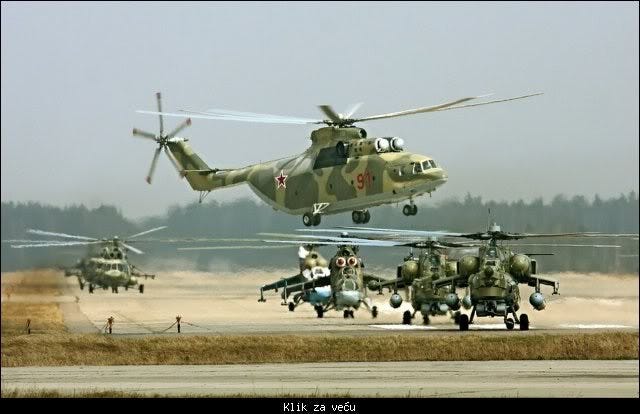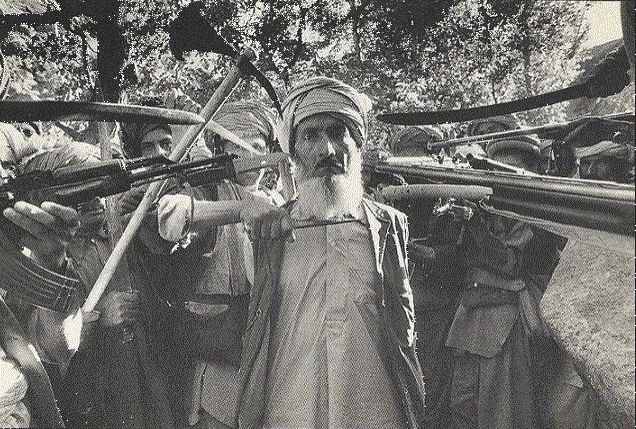Afghanistan: The 40-year-war (and counting)
Nadeem F. Paracha
1978
A communist revolution/coup in Afghanistan overthrows the nationalist government of Mohammad Daoud Khan. The revolution is led by Afghanistan’s main communist party, the People’s Democratic Party (PDP), and its supporters in the Afghan armed forces.


1979
Fighting breaks out within the PDP. Hafizullah Amin and Nur Muhammad Taraki of the party’s radical Khaliq faction take control of the government. But Amin topples Taraki by getting him killed. Political chaos ensues and Soviet forces roll into Kabul ‘to defend the revolution.’



1980
The Soviets put Babrak Karmal — the leader of PDP’s moderate faction, the Parcham — into power. Karmal reverses some of the Khaliq faction’s more radical socialist policies. Encouraged and strengthened by Soviet forces, Karmal announces a more left-liberal program.
The United States, Pakistan and Saudi Arabia decide to back newly-formed groups of anti-communist Afghan insurgents. The insurgents begin to call themselves the Mujahedeen and want to ‘liberate Afghanistan from the clutches of atheists.’



1981–85
Fighting between Soviet/Afghan forces and the Mujahedeen groups intensifies in the countryside. Mujahedeen leaders are headquartered in the Pakistani city of Peshawar. The US and Saudi Arabia increase their funding of the Mujahedeen.
‘Jihadi’ literature also begins to emerge. It is largely published in Texas (United States) and then distributed by the Pakistani authorities to attract more recruits for the Mujahedeen.
Men from other Muslim countries begin to arrive in Peshawar to fight alongside the Mujahedeen. They come from Egypt, Saudi Arabia, Yemen, Algeria and many other Arab countries. Many young Pakistanis from mainstream religious parties and newly-formed radical Islamist outfits too join.
The CIA greatly increases its funding to train and arm the Mujahedeen. This move is mainly coordinated by a right-wing, and, ironically, pro-Israel American socialite and anti-communist crusader, Joan Herring. She also becomes a close associate of Pakistani dictator, General Zia-ul-Haq.
Urban Afghanistan remains firmly in the hands of Soviet forces.






1986–89
The Pakistani ISI and American CIA inform Whitehouse that many Mujahedeen units were being hit hard by Soviet helicopter attacks. US President Ronald Regan agrees to supply the insurgents with anti-aircraft Stinger missiles. The missiles become effective in downing Soviet helicopters. Soviet troops are pushed back.
Najibullah, former head of Afghan intelligence agency, Khad, replaces Babrak Karmal, as President.
Soviet economy begins to buckle, causing severe food shortages in the Soviet Union.
In 1987, a huge car bomb kills dozens of civilians in a marketplace in the Pakistani city of Karachi. The Pakistan government accuses Khad for planting the bomb.
Saudi billionaire, Osama Bin Laden, forms the Al-Qaeda in Peshawar.
In 1988, the US, Pakistan and the Soviet Union agree to end the conflict. They sign a peace accord. Soviet forces begin to move out of Afghanistan.
In August 1988, Pakistani dictator Zia-ul-Haq is killed in an air-crash. Sabotage is suspected. Democracy returns to Pakistan.





1990–92
Civil War continues in Afghanistan, with Najibullah’s Afghan troops holding Kabul against Afghan and Arab insurgent groups.
In 1992, Najibullah is toppled. He takes refuge in a United Nation’s building. Mujahedeen groups begin to move into Kabul.




1992–95
The Mujahedeen groups soon split on ethnic and sectarian lines. Kabul is completely destroyed as various formally allied groups fight vicious battles against each other in the streets.
Many Mujahedeen leaders become warlords with their own militias and businesses. These include gun-running, extortion, banditry, poppy cultivation and heroin smuggling.



1996–2000
As war between former Mujahedeen groups rage, an elusive militia made up of Afghan fighters indoctrinated in madrassas — that were set up for recruiting purposes in the northern areas of Pakistan in the 1980s — suddenly emerge and rapidly begin to push back the quarrelling Mujahedeen groups.
The militia is led by an enigmatic figure called Mulla Omar and is propped up by Pakistani authorities and Saudi funds. The militia calls itself the Taliban.
The Taliban take control of over 90 percent of Afghanistan. It then sets up a harsh regime according to its own puritanical understanding of ‘Islamic Sharia.’
Though the looting ends, it is replaced by severe punishments and laws like public executions, whippings and stoning; banning of all kinds of sports and games, and of all forms of music; and compulsory head-to-toe burqas for women, and beards for men.
Osama Bin Laden bankrolls the Taliban regime and sets up Al-Qaeda’s headquarters in Kabul. Due to Taliban regime’s gross human rights violations, it is not recognized by any country. Only Pakistan, Saudi Arabia and the UAE recognize it.
However, in 1996–97, a large US petroleum company was dealing with the Taliban to lay the multi-million-dollar Turkmenistan-Pakistan-Afghanistan-India pipeline. But the company was asked by US government to move out of Afghanistan in 1998.
Thousands of Afghans escape to other countries as the conduct of the Taliban regime becomes harsher.





2001–2006
Al-Qaeda conducts an audacious terrorist attack in New York. More than 3000 Americans die.
US launches an invasion of Afghanistan and is facilitated by Pakistan. The Taliban regime parishes. A “moderate democratic set-up” is put in place. Hundreds of US/NATO troops pour in. Osama and Omar escape.
As US involvement and stay in Afghanistan deepens, the Taliban begin to regroup. Al-Qaeda begins to engineer terrorist attacks in Pakistan.






2007–2013
The Taliban regroup and manage to win back large swaths of land outside Kabul. A Pakistani version of the Taliban is formed in 2007, calling itself, Tehreek-e-Taliban Pakistan (TTP). As Afghan Taliban intensify their attacks against the US troops, the TTP launches terror attacks in Pakistan against civilians and security forces.
The Afghan government accuses Pakistan of not acting against Afghan Taliban hiding on the Pakistan side of the Pak-Afghan border.
In 2009, the TTP begins controlling almost all of Pakistan’s Swat valley.
The Pakistan military launches an offensive against the TTP in Swat, pushing TTP’s Swat-based leaders out. These men cross over to the Afghanistan side of the border.
US President Barak Obama promises to reduce US forces in Afghanistan. He uses drones to fire missiles to exterminate Afghan Taliban leaders.
TTP attacks in Pakistan dramatically increase and so do terror attacks (by Afghan Taliban) in Kabul.
In 2011 Osama Bin Laden is killed by US forces. Unknown to Pakistani security forces, he was hiding in a walled compound in the Pakistani city of Abbottabad.






2013–2018
Mulla Omar dies from illness. In 2015 Pakistan military and air force launch an extensive operation against the TTP. By 2016, TTP is all but wiped out. The number of terrorist attacks in Pakistan witness a drastic decrease. But Afghan Taliban attacks in Kabul increase.
Afghan and US governments accuse Pakistan of not taking action against Afghan Taliban on the Pakistan side of the Pak-Afghan border. Pakistan accuse the Afghan regime of not acting against TTP militants operating from the Afghan side of the border.
India’s political and economic involvement in Afghanistan grows, slighting Pakistani concerns.
ISIS presence in Afghanistan increases. Many TTP men pushed out from Pakistan begin to join ISIS. ISIS and Afghan Taliban clash for territory and influence. ISIS begins to recede after it is defeated in Syria and Iraq.
Afghan Taliban increase terror attacks in Kabul. Afghanistan remains trapped in an unending cycle of violence.





Naya Daur (new age)-A citizen-led digital media platform from Pakistan — stories which mainstream media ignores. Find us on Facebook, Youtube, & nayadaur.tv
Naya Daur (new age)-A citizen-led digital media platform from Pakistan — stories which mainstream media ignores. Find us on Facebook, Youtube, & nayadaur.tv

Historian Manan Ahmed reflects on the legacy of brutal attacks and why is it necessary to engage with the traumas of past sixteen years
That is how everything began. That is how everything ended - Mahmoud Darwish.
Recently in class, I asked if New York had a sacred geography. If there were places like shrines where *ziarat* took place. Almost immediately the response came that it was the September 11 Memorial in lower Manhattan. It is indeed true that the new Museum and memorial site where the Twin Towers once stood is now a place of pilgrimage — though Americans…



















































